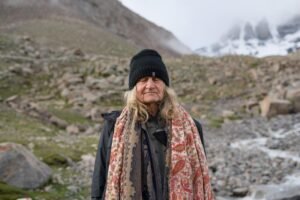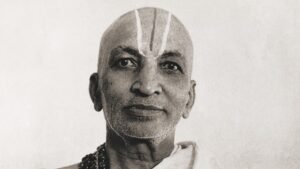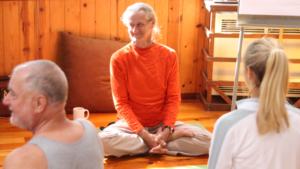“Religion becomes true and useful ONLY as patriarchal ideas of hierarchy and separation dissolve.” | Mark Whitwell
What are the root causes of sexual abuse in the Catholic Church and other religious organisations? How can sincere people of faith free themselves from the perversions of power structure and yet maintain their personal and communal relationship to God? What might a non-patriarchal religious life look like?
These are the questions that run through James Carrol’s important new book The Truth at the Heart of the Lie (2021), which tells the tale of the author’s life as a practicing Catholic, and one-time priest, and his disillusionment with the institution that represents his faith. The book spans Carrol’s youth within Catholic institutions in Boston, to his experience as an ordained priest in the 1960s, to his time working as a journalist for the Boston Globe as the paper broke the first stories of sexual abuse in local Churches. It includes a powerful description of his personal relationship to Jesus, which has endured in the midst of his heartbreak at the actions of priests.
The fundamental cause of dysfunction in the Church, Carrol argues, is clericalism and all that it entails: hierarchy, male dominance, doctrines of fear, and celibacy. In clear and thoughtful steps he explains how early Christianity was egalitarian, decentralised, communal, and defined by the Pauline mantra: in Christ, “there is neither male nor female.” This tradition was co-opted by the power structure of Rome in the 4th century following Emperor Constantine’s conversion to Christianity. At this point, Carrol shows, the state absorbed the Church into its hierarchical structure, and the spiritual teachings of Jesus, once a source of love and unity for all people, were turned into a tool to control women, expand empire, and justify bloodshed.

“The Source and the Seen are One. Therefore, intimate connection to body, breath, and relationship is the means of participating in God.” I Mark Whitwell
Clericalism, the author explains, is the idea that religious clergy are inherently superior, at the level of their being, to other groups in society—an idea that has no basis in Christ’s teachings. By virtue of having received Holy Orders, the priest is said to be “ontologically” transformed into a more Godly being. And this presumption of superiority over women and laypeople lays the foundation for abuse. “Clericalism is both the root cause and ongoing enabler of the present Catholic catastrophe… [because it] claims nothing less than divine authority for itself,” Carrol writes. My teacher U.G. Krishnamurti called it “the social dynamic of disempowerment.”
The disastrous idea of celibacy arose within this hierarchy of womanless men as a means of strengthening and perpetuating their claim to power. And here lies the beginning of the deep sexual dysfunction that runs through the Church, as well as society at large which was born out of the culture of the Church. We know that when sex is repressed it inevitably comes out as an illness:
“Across the centuries, the quashing of normal erotic urges only drove such appetites into the social and psychological netherworld, where they festered with predictable results: sexual neurosis, ecclesiastical dishonesty, desire displaced into power, obsessive insistence on male dominance, demonization of deviance from unrealistic norms, scrupulosity canonized, denial of all of this as the governing instrument of clericalism” (174).
The original teachings and even the life of Jesus was full of intimate friendships with women. Carrol rejects the idea that celibacy is a teaching of Jesus and instead traces its origins to historic figures and historic events; namely, Saint Augustine of Hippo—a man who was deeply conflicted about his sex—and his influential re-interpretation of the bible’s Garden of Eden scene: his idea that Adam ‘knew’ Eve sexually and that sex therefore is the ‘original sin’ that caused the exile of humanity from paradise.
Carrol also shows how the policy of celibacy arose from the desire of the Church to protect its massive land holdings and assets in Western Europe in the 12th century. Hardly a means of high spirituality, celibacy was a means to prevent clergy from having children so they would not produce heirs that could lay claim to Church estates and hoarded treasures.
The final section of the book is a heart-felt and practical vision of what an alternative religious life might look like. He looks forward to a new Church as well backwards to the original community that formed around Christ. He calls for a non-hierarchical congregation that is served by laypeople in local communities of worship, a membership in which everybody is ontologically equal to everyone else, in which sacraments can be made by women and married men, in which the mad idea of mandatory celibacy is relegated to the past, and where the hostility between different faiths is replaced by collaboration and respect.
In 2019, I published a book titled God and Sex: Now We Get Both. Much like Carrol argues, I offer the view that “Religion becomes true and useful only as patriarchal ideas of separation and hierarchy dissolve.” God and Sex represents the summary of the wisdom teachings of Yoga from my teachers Tirumalai Krishnamacharya and his son T.K.V. Desikachar. As Yoga teachers we intervene the life denying assumptions that Carrol so brilliantly illuminates. Those assumptions which have pitted spirituality against sexuality for thousands of years—not just in Catholicism, but in all doctrine based, exoteric religious power structures, and even in the cult of normal society.

Tirumalai Krishnamacharya (1888-1989) ‘The Teacher of the Teachers.’
I am deeply heartened reading The Truth at the Heart of the Lie for it affirms the need to heal this imagined divide between God and Sex. Carrol’s book allows us to see the hoax that has been perpetrated in the name of Jesus. And he does so in order to clear the ground for a new religious practice to emerge: a practice defined by, you could say, Yogic principles of equality, intimacy, and mutuality between male and female—whether in same sex or opposite sex intimacy. I know that Yoga—the union of opposites within and without—will profoundly serve this cultural sea-change.

Yoga is the practical means to shift from exoteric religion to esoteric, personal participation in God free from the perversions of power structure | Mark Whitwell
Over the years, I have seen how all people have suffered deeply the fear that their desire for intimate connection is somehow ungodly, and that sex is less than sacred activity. I have also seen, however, that when a person brings Sex to their understanding of God and God to their understanding of Sex, a profound healing can occur. God is Sex. Creation is Sex. And our life is about participation in that beauty, that source, and therefore requires right relationship and right sexuality. To heal this divide is our work.
Are we in a historic moment when the darkness of patriarchy and presumed separation from God can finally vanish? Are we now able to create true spiritual community in which there is no idea of a hierarchy between participants? James Carrol’s book gives us reason to hope.





